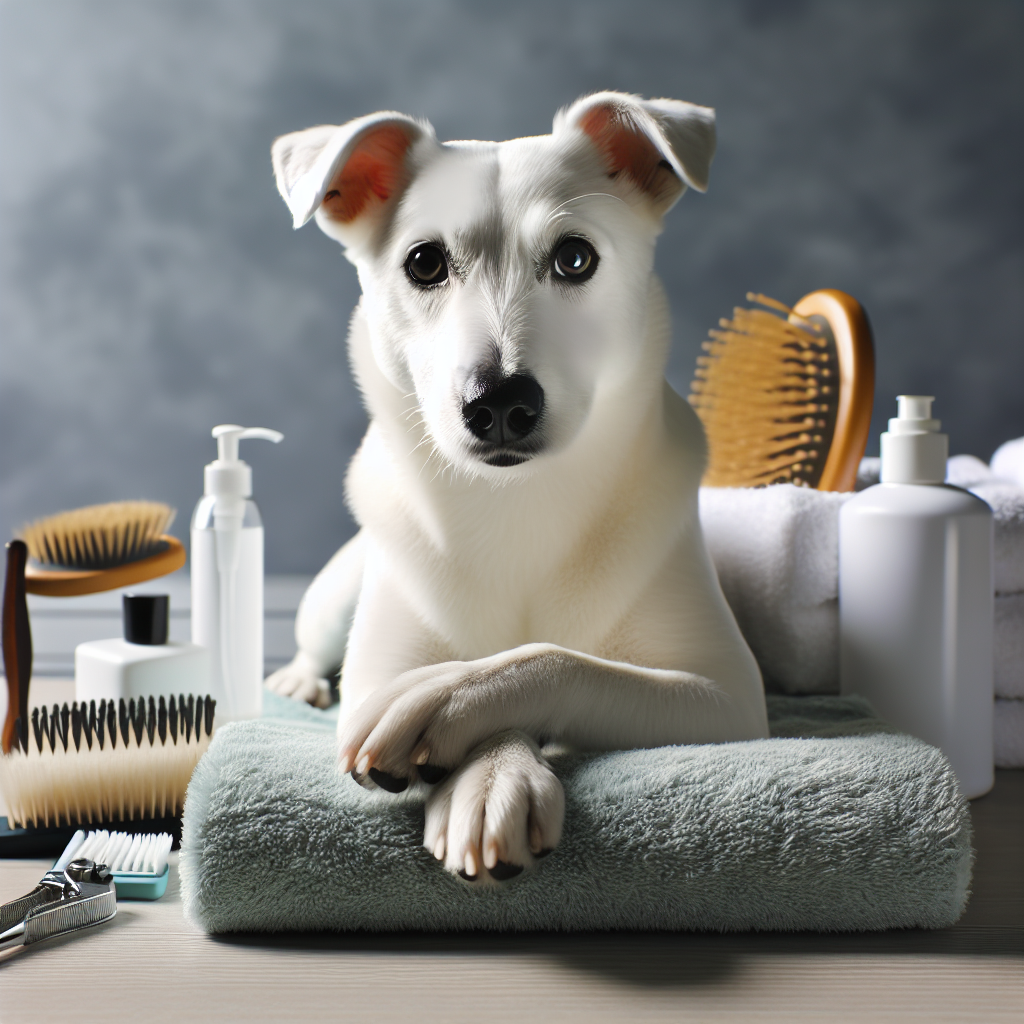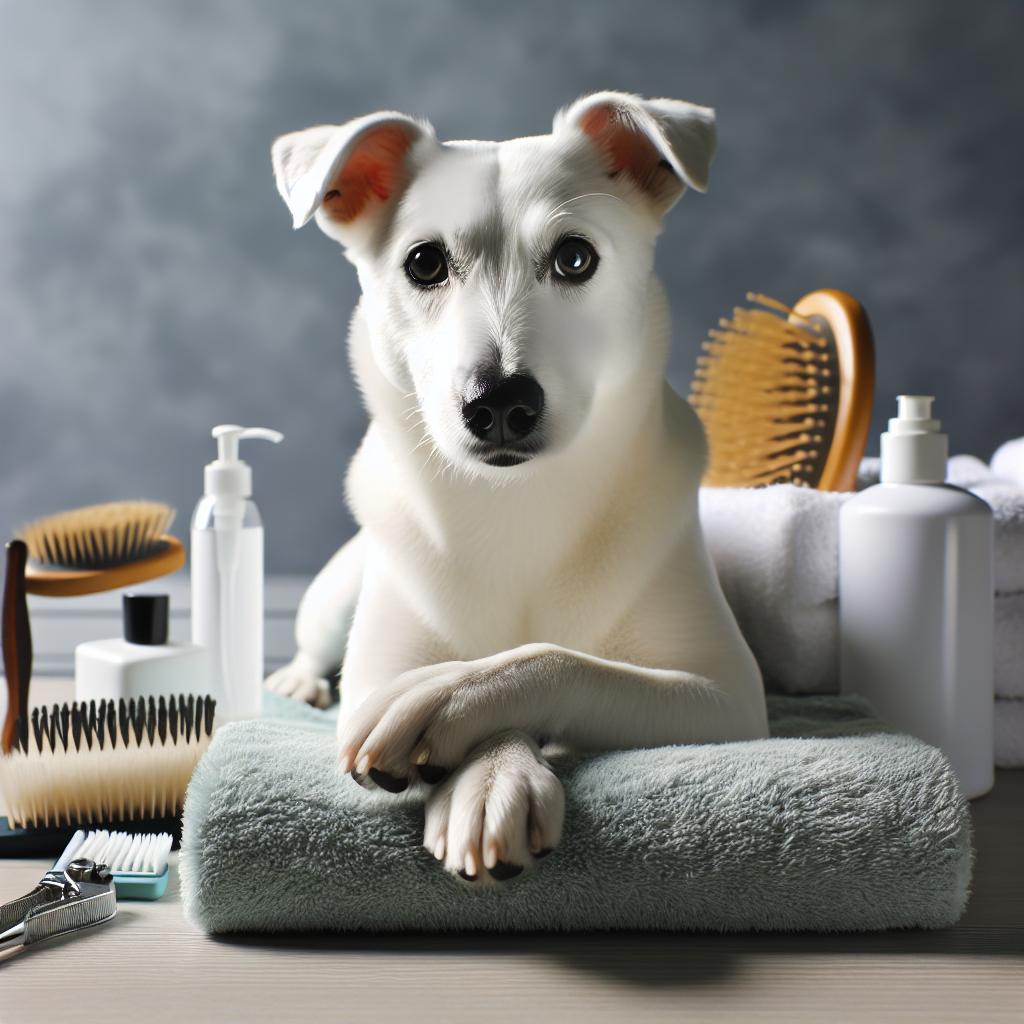You love your furry friend dearly, but let’s admit it – keeping up with your dog’s hygiene can be a challenging task. From regular grooming to maintaining a clean living environment, ensuring your dog’s cleanliness is essential for their health and overall wellbeing. In this article, we will explore the ins and outs of dog hygiene, providing you with practical tips and tricks to keep your pup happy, healthy, and smelling fresh. So, grab a grooming brush, put on your doggy-friendly smile, and let’s dive into the wonderful world of dog hygiene!
Bathing
How often should you bathe your dog?
Bathing your dog is an essential part of their hygiene routine, but how often should you do it? The frequency of baths depends on several factors, including your dog’s breed, activity level, and overall health. Generally, most dogs benefit from a bath every 4-8 weeks. However, some breeds with oily skin or allergies may require more frequent baths, while others with dry skin may need them less often. It’s important to strike a balance and avoid over-bathing, as this can strip the natural oils from your dog’s coat and lead to skin issues.
Choosing the right dog shampoo
When it comes to choosing a dog shampoo, it’s crucial to select one specifically formulated for dogs. Human shampoos can be too harsh for their sensitive skin and may cause irritation. Look for shampoos that are pH-balanced, hypoallergenic, and free from harsh chemicals or fragrances. If your dog has specific skin conditions or allergies, consult with your veterinarian to find a shampoo that addresses those needs. Always remember to read the labels and follow the instructions for the best results.
Preparation before bath time
Preparation is key to ensuring a successful and stress-free bathing experience for both you and your furry friend. Before bath time, gather all the necessary supplies, including dog shampoo, towels, a brush, and any other grooming tools you may need. Brush your dog’s coat thoroughly to remove any tangles or mats, as wetting the fur can make them worse. Additionally, consider placing a non-slip mat or towel in the bathtub or shower to prevent your dog from slipping and feeling uneasy during the bath.
Tips for bathing your dog
Bathing your dog can be a fun and bonding experience when done right. Here are some helpful tips for a successful bath time:
-
Start by gently wetting your dog’s coat with warm (not hot) water. Avoid spraying water directly into their face, as this may cause discomfort.
-
Apply the dog shampoo according to the instructions on the bottle. Massage it into your dog’s coat, taking care to reach all the way down to the skin. Be cautious around sensitive areas like the eyes and ears.
-
Rinse the shampoo thoroughly, ensuring no residue is left behind. Leaving shampoo on your dog’s skin can lead to irritation and itching.
-
If your dog has a long or thick coat, you may need to repeat the shampooing and rinsing process to ensure cleanliness.
-
Once your dog is clean, use a clean towel to gently dry their coat. If your dog tolerates it, you can also use a blow dryer on a low, cool setting. Make sure to keep the dryer at a safe distance and avoid overheating your dog’s skin.
Remember to praise and reward your dog with treats or affection throughout the bath to make it a positive experience for them.
Drying your dog after a bath
Properly drying your dog after a bath is vital to prevent skin issues and discomfort. Use a clean towel or a dog-specific drying towel to gently remove excess moisture from their coat. If your dog has a long or thick coat, you may need to use multiple towels. Make sure to thoroughly dry the paws and any hard-to-reach areas, as dampness can lead to bacterial growth or matting. If you choose to use a blow dryer, use the lowest heat setting and keep it at a safe distance to avoid overheating the skin. Pay attention to your dog’s comfort level and stop the drying process if they show signs of stress or discomfort.
Brushing
The importance of regular brushing
Regular brushing is crucial for maintaining your dog’s coat health and overall well-being. Brushing not only helps to remove loose fur and dirt, but it also stimulates the skin and promotes blood circulation. Additionally, brushing helps distribute the natural oils from the skin throughout the coat, keeping it shiny and healthy. It also allows you to examine your dog’s skin for any abnormalities, such as bumps, rashes, or parasites. Beyond the physical benefits, brushing is an excellent bonding activity that strengthens the bond between you and your dog.
Different types of brushes
There are various types of brushes available, and the right one depends on your dog’s coat type. Here are some commonly used brushes:
-
Bristle brush: This brush is suitable for dogs with short, smooth coats and helps to remove loose fur and surface debris.
-
Slicker brush: Ideal for dogs with medium to long hair, a slicker brush has fine, short wires close together. It helps to remove tangles, mats, and loose fur without damaging the coat.
-
Undercoat rake: This type of brush is specifically designed for breeds with thick double coats. It effectively removes loose undercoat fur and minimizes shedding.
-
Pin brush: With long, straight bristles, a pin brush is suitable for dogs with long, curly, or silky coats. It helps to detangle and remove debris, leaving the coat looking smooth and shiny.
Always choose a brush that is appropriate for your dog’s coat type to achieve the best results without causing any discomfort.
Brushing techniques for different coat types
The technique you use when brushing your dog depends on their specific coat type. Here are some guidelines to follow:
-
Short coats: For dogs with short coats, use a bristle brush or a grooming mitt to remove loose fur and dirt. Brush in the direction of hair growth, applying gentle pressure to avoid causing any discomfort.
-
Medium to long coats: Dogs with medium to long coats require more frequent brushing to prevent mats and tangles. Start by using a slicker brush to remove any knots or mats, followed by a pin brush to smooth the coat. Be thorough, and divide the coat into sections for easier brushing.
-
Double coats: Breeds with double coats, such as Siberian Huskies or Golden Retrievers, often have a dense undercoat. Use an undercoat rake to remove loose fur from the undercoat and prevent matting. Finish with a slicker brush to remove any remaining tangles.
Remember to be gentle and patient while brushing to avoid hurting your dog’s skin or causing discomfort. If your dog has particularly stubborn mats or tangles, consider seeking professional grooming assistance.
Brushing your dog’s teeth
Just like humans, dogs also require dental care to maintain good oral hygiene. Regular brushing of your dog’s teeth helps to prevent tartar buildup, gum disease, and tooth loss. Here’s how to brush your dog’s teeth:
-
Introduce the toothbrush gradually to avoid overwhelming your dog. Start by letting them sniff and lick the toothbrush.
-
Use a dog-specific toothbrush or a child-sized toothbrush with soft bristles. Do not use human toothpaste, as it contains ingredients that are harmful to dogs. Instead, use a canine toothpaste that is specially formulated for their oral health.
-
Lift your dog’s lips and gently brush their teeth using circular or back-and-forth motions. Pay extra attention to the gum line and the back teeth, as these are common areas for plaque buildup.
-
Start with short brushing sessions, gradually increasing the duration as your dog becomes more comfortable. Always end the session on a positive note, offering treats or praise as a reward.
If your dog demonstrates resistance or anxiety during toothbrushing, consult with your veterinarian for alternative dental care options, such as dental chews, dental wipes, or water additives.
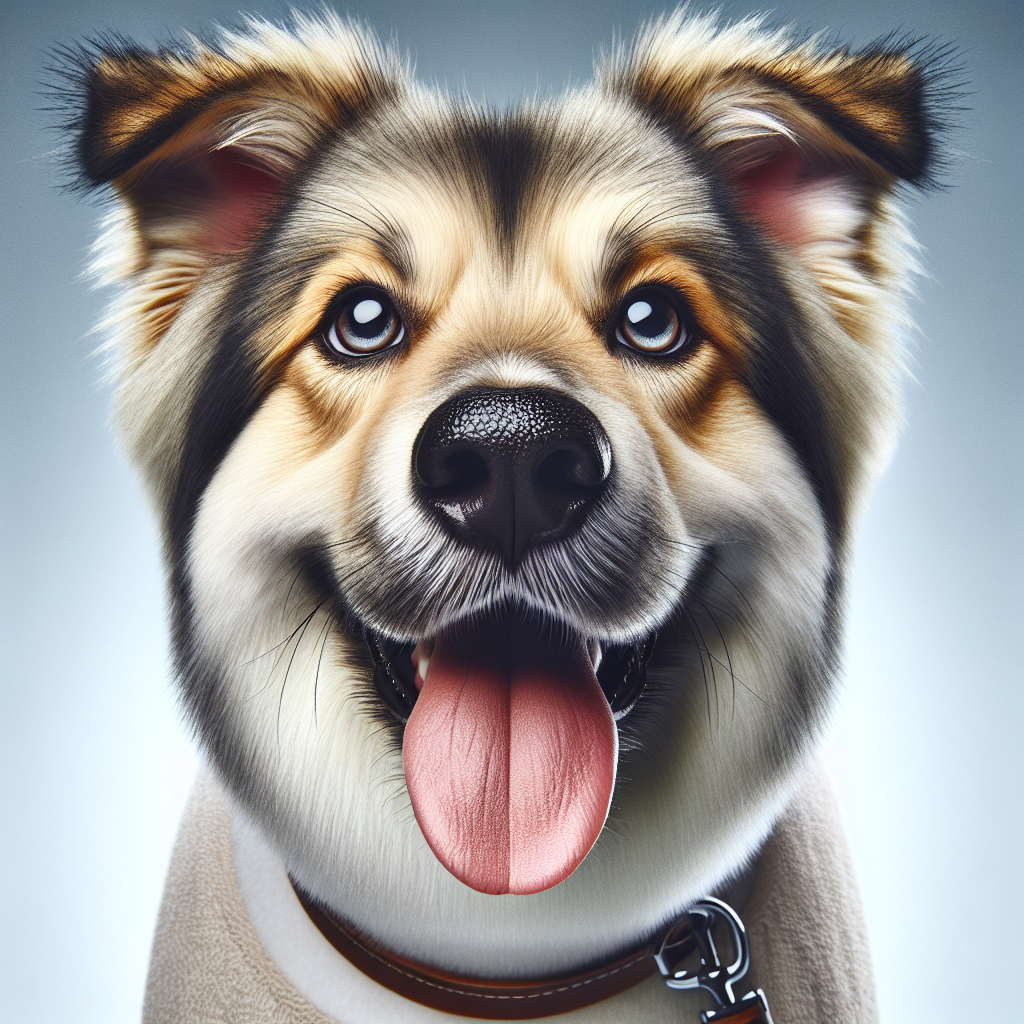
Ear Care
Understanding the importance of ear care
Ear care is an often overlooked aspect of dog hygiene, but it is essential for their overall health and well-being. Regular ear cleaning helps to prevent infections, remove excess wax, and detect any early signs of ear problems. Dogs with long, floppy ears are particularly prone to ear infections due to reduced airflow. By maintaining proper ear hygiene, you can minimize discomfort and potential health issues for your furry friend.
How to clean your dog’s ears
Cleaning your dog’s ears should be done carefully and gently to avoid causing any harm or discomfort. Here’s a step-by-step guide on how to clean your dog’s ears:
-
Start by gathering the necessary supplies, including an ear cleaning solution specifically made for dogs and cotton balls or gauze pads.
-
Find a calm and quiet area to perform the ear cleaning process. Make sure your dog is relaxed and comfortable.
-
Lift your dog’s ear flap gently and inspect the ear for any redness, swelling, discharge, or foul odor. If you notice any abnormalities or suspect an ear infection, consult with your veterinarian before proceeding with the cleaning.
-
Squeeze a few drops of the ear cleaning solution into the ear canal. Gently massage the base of the ear for about 30 seconds to help loosen any debris or wax.
-
Use a clean cotton ball or gauze pad to wipe away the loosened debris and excess solution from the ear. Be careful not to insert the cotton ball too deep into the ear canal.
-
Repeat the process on the other ear if necessary.
It’s important to note that different breeds may require different ear care routines. Breeds with hair growing inside the ear canal, such as Poodles or Bichon Frises, may need regular hair plucking to prevent blockages and infections. If you are unsure about the appropriate ear care routine for your dog, consult with your veterinarian.
Dealing with ear infections
Ear infections can be painful and uncomfortable for your dog. Common signs of an ear infection include excessive scratching, head shaking, redness, swelling, discharge, or a foul odor coming from the ear. If you suspect your dog has an ear infection, it’s crucial to seek veterinary attention. Your veterinarian will examine the ear, perform diagnostic tests if necessary, and prescribe appropriate medication to treat the infection. It is essential to follow your veterinarian’s instructions and complete the full course of treatment to ensure complete resolution of the infection.
Dental Care
Why dental care is essential
Just like humans, dogs can suffer from dental problems, including gum disease and tooth decay. Proper dental care is crucial to prevent these issues and maintain your dog’s overall health. Dental problems not only cause discomfort and pain but can also lead to more severe conditions, such as infections that can spread to other parts of the body. By implementing a regular dental care routine, you can promote good oral hygiene and ensure your dog’s teeth and gums stay healthy.
Brushing your dog’s teeth
Regular brushing is the most effective way to maintain your dog’s dental hygiene. Here’s how to brush your dog’s teeth:
-
Choose a toothbrush specifically designed for dogs or a child-sized toothbrush with soft bristles. Avoid using human toothpaste, as it can be harmful to dogs. Instead, use a dog-specific toothpaste with flavors that appeal to them.
-
Introduce the toothbrush gradually, allowing your dog to sniff and lick it before attempting to brush their teeth.
-
Lift your dog’s lips and gently brush their teeth using circular or back-and-forth motions. Pay extra attention to the gum line and the back teeth, where plaque and tartar tend to accumulate.
-
Start with short brushing sessions, gradually increasing the duration as your dog becomes more comfortable. Always end the session on a positive note, rewarding your dog with treats or praise.
-
If your dog is resistant to toothbrushing or has significant dental issues, consult with your veterinarian. They may recommend a professional dental cleaning under anesthesia.
Other methods for maintaining dental hygiene
In addition to regular toothbrushing, there are other methods you can incorporate into your dog’s dental care routine:
-
Dental chews: Dental chews are designed to promote chewing and aid in reducing plaque and tartar buildup. Look for dental chews that are specifically formulated for dogs and approved by veterinary dental associations.
-
Dental rinses or water additives: Dental rinses or water additives can help reduce bacteria in your dog’s mouth and freshen their breath. However, it’s essential to consult with your veterinarian before using any dental products to ensure they are safe and effective.
-
Regular veterinary check-ups: Routine dental examinations during your dog’s regular veterinary check-ups are crucial for detecting early signs of dental problems. Your veterinarian can perform professional dental cleanings if necessary and provide guidance on proper dental care for your dog.
Remember, it’s never too early or too late to start taking care of your dog’s dental hygiene. By implementing a comprehensive dental care routine, you can significantly improve their oral health and overall well-being.
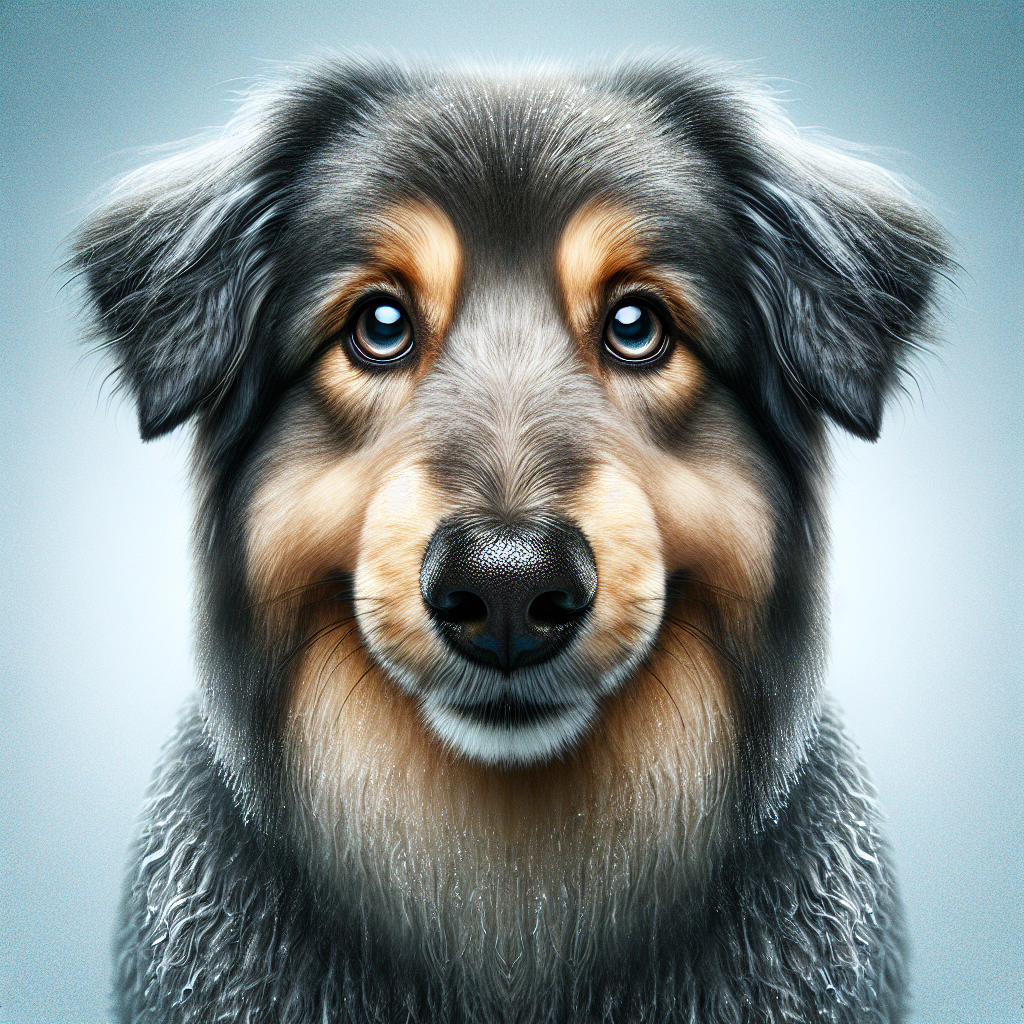
Nail Trimming
Why nail trimming is important
Regular nail trimming is an essential part of your dog’s hygiene routine. Long nails not only cause discomfort and pain for your dog but can also lead to various issues. When nails become too long, they can curl and grow into the paw pads, causing infections or walking difficulties. Additionally, long nails can get snagged on surfaces, leading to painful tears or breaks. By keeping your dog’s nails properly trimmed, you can prevent these problems and ensure their overall comfort.
How to trim your dog’s nails
Trimming your dog’s nails can be a challenging task, especially if your dog is not accustomed to it. Here’s a step-by-step guide to help you through the process:
-
Choose the right nail trimmer for your dog’s size and nail thickness. There are various types available, including guillotine-style trimmers, scissor-style trimmers, and grinder tools. Consult with your veterinarian or a professional groomer to select the most suitable option for your dog.
-
Familiarize your dog with the nail trimmer by letting them sniff and inspect it. Reward them with treats or praise to create a positive association.
-
Find a well-lit area and ensure your dog is calm and relaxed. Have treats nearby as a reward for good behavior.
-
Gently hold your dog’s paw, and using the trimmer, cut a small portion of the nail at a time. Be cautious of the quick, which is a blood vessel within the nail. Cutting too close to the quick may cause bleeding and discomfort. If your dog has dark-colored nails, be extra careful as the quick may be harder to see.
-
If you accidentally cut into the quick and bleeding occurs, apply a small amount of styptic powder or cornstarch to stop the bleeding. Consult with your veterinarian if bleeding persists.
-
Gradually work your way through all the nails, taking breaks if needed to keep your dog comfortable.
-
Remember to reward your dog with treats and praise after each successful nail trimming session.
If you find the process too challenging or your dog becomes too stressed, consider seeking professional help from a veterinarian or a professional groomer.
Dealing with overgrown nails
If your dog’s nails have become overgrown and curling, it’s important to address the issue as soon as possible. Cutting overgrown nails in one session may cause discomfort or bleeding, so it’s best to gradually trim them over several sessions. Start by cutting a small portion at a time, and continue trimming every few days until the nails reach an appropriate length. In severe cases, where the nails have grown into the paw pads, seek veterinary assistance to safely remove the embedded nails and treat any potential infections. Regular nail maintenance and keeping an eye on their length will prevent overgrown nails and the associated problems.
Eye Care
Keeping your dog’s eyes clean
Your dog’s eyes are delicate and require regular care to keep them clean and healthy. Here’s how to maintain proper eye hygiene for your furry friend:
-
Examine your dog’s eyes regularly for any signs of discharge, redness, swelling, or cloudiness. These can indicate an underlying problem and require veterinary attention.
-
Gently wipe away any discharge or debris around the eyes using a clean, damp cloth or a dog-specific eye wipe. Start from the inside corner of the eye and move outward to avoid spreading any contaminants.
-
If your dog has excessive tearing or eye discharge, consult with your veterinarian to determine the cause and appropriate treatment.
-
Be cautious when using any eye drops or ointments for your dog. Always follow your veterinarian’s instructions and avoid using any products intended for humans, as they may contain ingredients that can be harmful to dogs.
By following these simple steps, you can help maintain your dog’s eye health and detect any potential issues early on.
Detecting and treating common eye problems
Dogs are prone to various eye problems, and early detection is crucial for prompt treatment. Here are some common eye problems in dogs:
-
Conjunctivitis: Conjunctivitis, also known as pink eye, is characterized by redness, swelling, discharge, and increased tearing. It can be caused by allergies, infections, or foreign objects. Treatment typically involves medication prescribed by a veterinarian.
-
Corneal ulcers: Corneal ulcers are open sores on the surface of the eye and can be caused by scratches, foreign objects, or infections. Symptoms include squinting, excessive tearing, redness, and sensitivity to light. Veterinary eye drops or ointments are often prescribed for treatment.
-
Cherry eye: Cherry eye is a condition where the gland in a dog’s third eyelid becomes swollen and protrudes, resembling a cherry. It can cause discomfort and may require surgical correction.
-
Cataracts: Cataracts are cloudiness in the lens of the eye, resulting in vision impairment. Some cataracts can be genetic, while others may develop due to aging or underlying health conditions. Surgical intervention is sometimes necessary for advanced cataracts.
If you notice any changes or abnormalities in your dog’s eyes, it’s important to have them examined by a veterinarian. Prompt diagnosis and treatment can prevent further complications and ensure your dog’s eyes remain healthy.
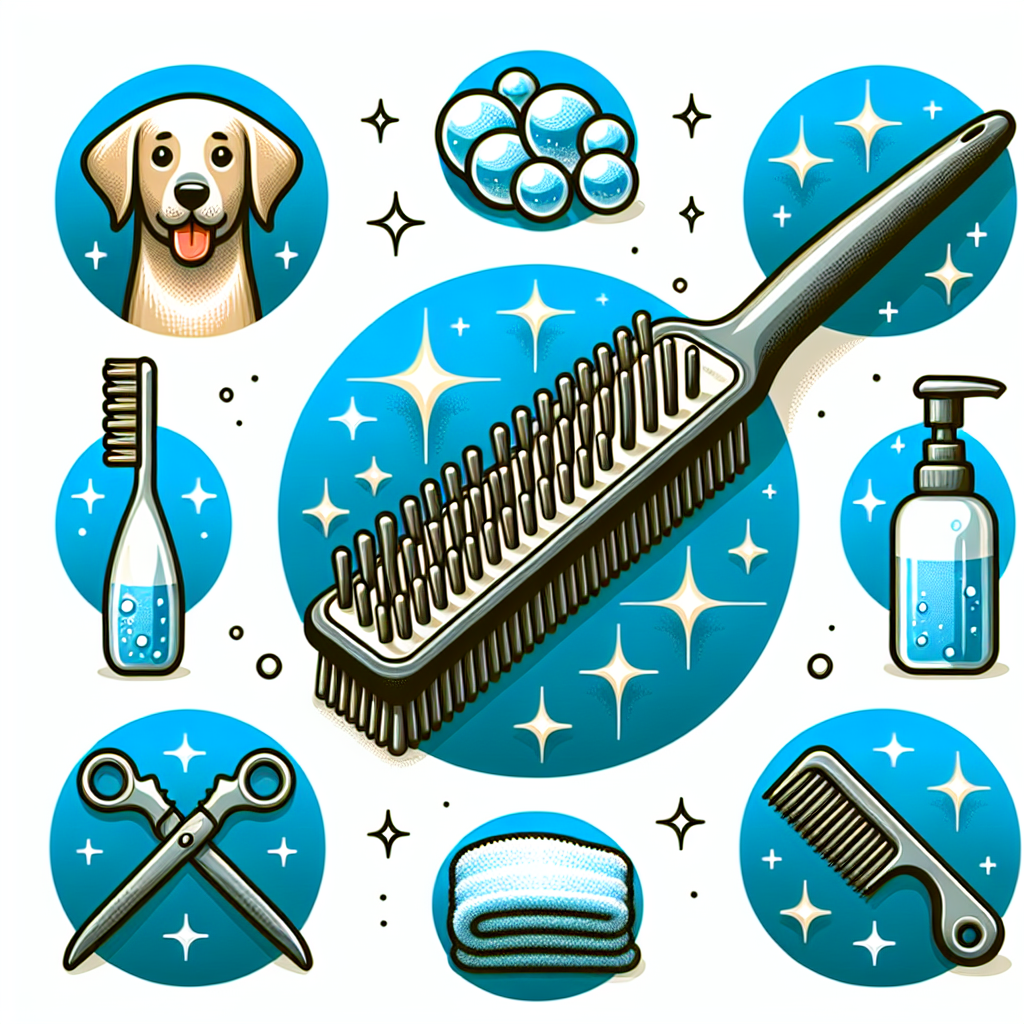
Anal Gland Care
Understanding anal glands
Anal glands, also known as scent glands, are located on either side of your dog’s anus. They produce a smelly secretion that is used for marking territory and communicating with other dogs. Anal glands normally empty themselves during bowel movements, but occasionally, they can become impacted or infected, leading to discomfort and potential complications.
Signs of anal gland problems
When there are issues with your dog’s anal glands, several signs may indicate a problem:
-
Scooting or dragging the rear end along the ground: This behavior is often an attempt to relieve discomfort or itchiness caused by impacted or infected anal glands.
-
Excessive licking or biting of the rear end: Dogs may try to alleviate the discomfort by licking or biting the anal area.
-
Foul odor: Impacted or infected anal glands can emit a strong, unpleasant smell. If you notice an unusual odor coming from your dog’s rear end, it may be an indication of anal gland problems.
-
Swelling or redness around the anal area: Inflamed anal glands can cause swelling, redness, or tenderness around the anus.
If you observe any of these signs or suspect your dog has anal gland problems, it’s important to consult with your veterinarian. They can assess the situation, express the glands if needed, and provide appropriate treatment.
Cleaning your dog’s anal glands
For most dogs, regular emptying of the anal glands through bowel movements is sufficient. However, some dogs may require additional assistance. Here’s how to clean your dog’s anal glands:
-
Consult with your veterinarian to determine if your dog needs manual expression of the anal glands. They can show you the proper technique or demonstrate it for you.
-
If necessary, manual expression of the anal glands should be performed by a veterinarian or a trained professional. Attempting to do it yourself without proper knowledge and experience can cause injury or increase the risk of infection.
-
If your dog consistently experiences anal gland issues, a change in diet may be recommended. Dietary modifications can sometimes help regulate bowel movements and reduce the frequency of anal gland problems.
Remember to always consult with your veterinarian before attempting to manually express your dog’s anal glands or make any dietary changes.
Paw Care
Inspecting and cleaning your dog’s paws
Your dog’s paws are subjected to various elements, and regular paw care is essential for their comfort and well-being. Here’s how to properly care for your dog’s paws:
-
Regularly inspect your dog’s paws for any cuts, abrasions, or foreign objects like thorns or splinters. If you notice any abnormalities, clean the affected area with mild antiseptic solution and consult with your veterinarian if necessary.
-
Keep your dog’s paw pads moisturized to prevent dryness and cracking. You can use paw balms or pet-friendly moisturizers to keep the paw pads supple. However, avoid using any products that are not specifically formulated for dogs, as they may be harmful.
-
After walks or outdoor activities, check between the paw pads for any debris such as dirt, rocks, or ice. Use a damp cloth or gentle paw wipes to clean the paws and remove any foreign objects.
By regularly inspecting and cleaning your dog’s paws, you can prevent potential problems and keep their paws healthy.
Dealing with paw pad injuries
Sometimes, despite our best efforts, paw pad injuries can occur. Here’s how to handle minor paw pad injuries:
-
Gently clean the injured paw pad with mild antiseptic solution or saline water to remove any dirt or debris. Avoid using hydrogen peroxide or any strong chemicals, as they can delay the healing process.
-
Apply a pet-safe antibacterial ointment to the injured paw pad to prevent infection.
-
Protect the injured paw with a clean, breathable bandage or a dog-specific bootie. Ensure the bandage is not too tight, as it can restrict blood circulation.
-
Monitor the injured paw for any signs of worsening or infection, such as increased swelling, redness, discharge, or persistent lameness. If you notice any concerning signs or the injury does not improve within a couple of days, consult with your veterinarian.
For more severe paw pad injuries, deep cuts, or bleeding that does not stop, seek immediate veterinary care.
Trimming the fur between paw pads
The fur between your dog’s paw pads can trap debris, mud, and moisture, leading to discomfort and potential skin issues. Trimming the fur regularly can help prevent these problems. Here’s how to safely trim the fur between your dog’s paw pads:
-
Use a pair of blunt-ended scissors or grooming clippers specifically designed for paw pad hair.
-
Hold your dog’s paw gently and lift it to expose the paw pad and the fur between.
-
Carefully trim the excess fur, taking care not to cut too close to the skin or accidentally nip the paw pad.
-
If your dog has long hair that tends to mat or form knots, consider using thinning shears to remove bulk and reduce the risk of tangles.
Remember to exercise caution and use gentle, controlled movements to avoid causing any discomfort or injury to your dog.
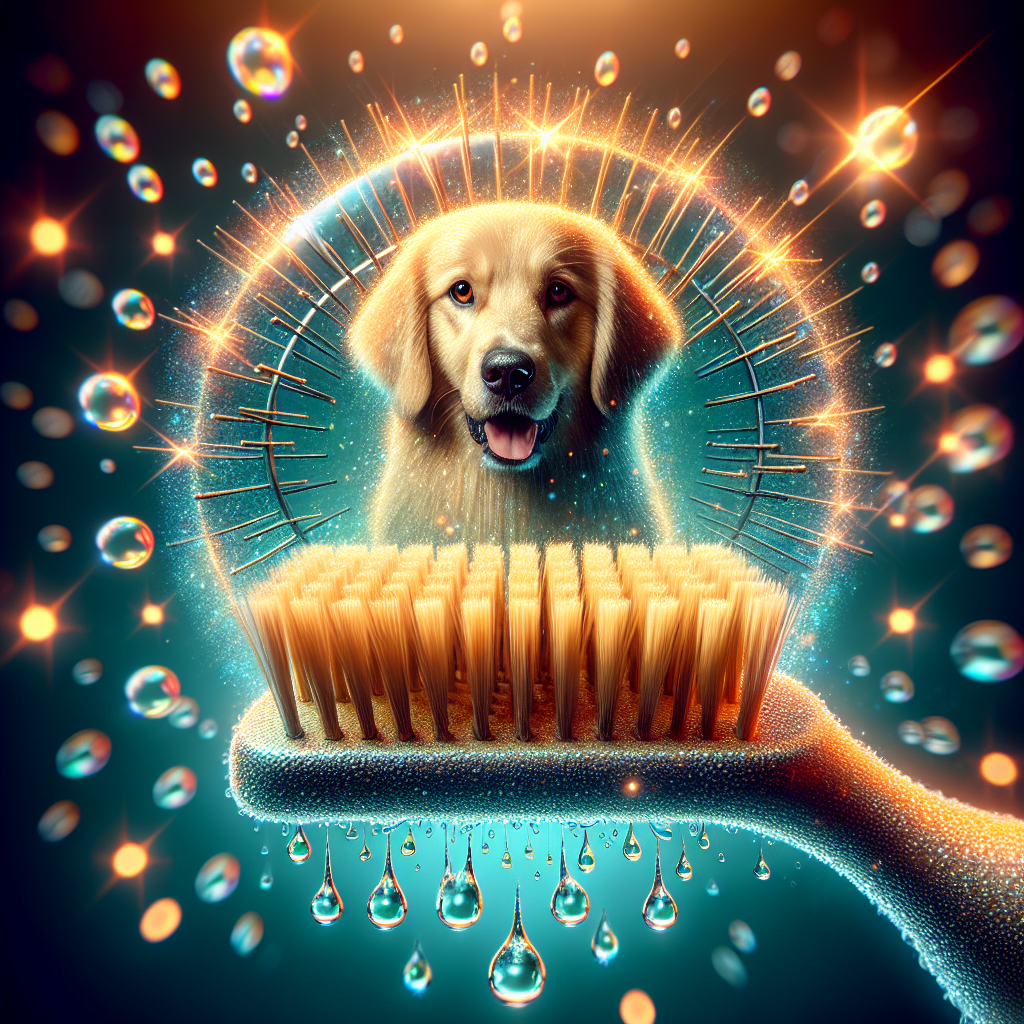
Maintaining a Clean Environment
Regularly cleaning your dog’s bedding
Your dog’s bedding is a prime area for dirt, hair, and odors to accumulate. Regular cleaning of their bedding is essential for maintaining a clean environment. Here’s how to clean your dog’s bedding effectively:
-
Check the care instructions provided by the manufacturer for specific cleaning recommendations. Different bedding materials may require different cleaning methods.
-
If the bedding is machine washable, remove any loose fur, and wash it on a gentle cycle with pet-friendly laundry detergent. Avoid using products that contain fragrances or harsh chemicals that may irritate your dog’s skin.
-
If the bedding is not machine washable, spot clean any stains or soiled areas with a pet-safe stain remover or a mixture of mild detergent and water.
-
Allow the bedding to dry thoroughly before returning it to your dog’s sleeping area. Direct sunlight or a low heat setting in a dryer can help speed up the drying process.
By regularly cleaning your dog’s bedding, you can eliminate odors, reduce allergens, and provide your furry friend with a clean and comfortable resting place.
Vacuuming and mopping to reduce dander and hair
Regular vacuuming and mopping are essential to keep your home clean and free from dog dander and hair. Here’s how to effectively minimize dog-related messes:
-
Vacuum your home regularly, focusing on areas where your dog spends the most time. Use a vacuum cleaner equipped with a high-quality pet hair attachment or a specialized pet vacuum cleaner to effectively remove pet hair from carpets, rugs, and upholstery.
-
Consider using a lint roller or a pet hair removal tool on furniture and clothing to remove any stray hairs.
-
Dust and wipe down surfaces, including shelves, tables, and windowsills, to minimize dander accumulation.
-
Mop hard floors regularly using a pet-friendly floor cleaner to remove any tracked-in dirt or hair.
-
Use air purifiers or open windows to improve air circulation and reduce allergens.
By incorporating regular cleaning routines into your home maintenance, you can create a clean and healthy environment for both you and your dog.
Proper disposal of dog waste
Proper disposal of dog waste is essential not only for cleanliness but also for environmental and public health reasons. Here’s how to dispose of dog waste responsibly:
-
When walking your dog, always carry waste bags or use a pet waste dispenser. Be prepared to clean up after your dog whenever they relieve themselves.
-
Scoop the waste using a waste bag or a poop scooper, ensuring you pick up all solid waste.
-
Tie the waste bag securely to prevent any leakage or odor. Dispose of it in designated waste bins or follow local regulations regarding pet waste disposal.
-
If you have a backyard, regularly pick up and dispose of your dog’s waste to prevent the accumulation of feces and potential contamination.
Remember to always be a responsible pet owner and clean up after your dog. Proper waste disposal minimizes the risk of bacterial contamination and helps keep public spaces clean and enjoyable for everyone.
Regular Vet Check-ups
The importance of regular vet check-ups
Regular veterinary check-ups are crucial for maintaining your dog’s overall health and addressing any hygiene concerns. Here’s why regular vet check-ups are essential:
-
Prevention and early detection: Regular check-ups allow your veterinarian to assess your dog’s health, perform necessary tests, and detect any potential health issues early on. This includes identifying dental problems, skin conditions, or underlying diseases that may affect your dog’s hygiene.
-
Vaccinations and preventive treatments: Your veterinarian will ensure your dog is up to date on necessary vaccinations to protect them from preventable diseases. They can also provide preventive treatments for parasites, such as fleas, ticks, and heartworms, which can impact your dog’s hygiene and overall health.
-
Advice and guidance: Your veterinarian can provide valuable advice on maintaining your dog’s hygiene and cleanliness. They can offer recommendations for specific grooming products, address any concerns you may have, and guide you on appropriate hygiene practices for your dog’s breed and individual needs.
-
Professional grooming assistance: If your dog requires professional grooming services, your veterinarian can refer you to trusted groomers who can assist with specific hygiene needs, such as haircuts or specialized treatments.
By scheduling regular check-ups with your veterinarian, you can ensure your dog receives appropriate care and maintain their hygiene and overall well-being.
Vaccinations and preventive treatments
Vaccinations and preventive treatments play a crucial role in maintaining your dog’s hygiene and protecting their health. Here are some common vaccinations and preventive treatments your veterinarian may recommend:
-
Core vaccinations: Core vaccinations are essential for all dogs and protect against diseases such as distemper, canine parvovirus, canine adenovirus, and rabies. These vaccinations are typically administered in a series of shots during puppyhood, with regular boosters throughout their adult life.
-
Non-core vaccinations: Non-core vaccinations are optional and recommended based on your dog’s lifestyle and risk factors. These may include vaccinations for diseases such as canine influenza, leptospirosis, or Bordetella (kennel cough). Consult with your veterinarian to determine which non-core vaccinations are appropriate for your dog.
-
Parasite prevention: Parasite prevention is crucial for maintaining your dog’s hygiene and preventing the spread of parasites to humans and other pets. Regular preventive treatments for fleas, ticks, and heartworms are typically administered monthly. Your veterinarian can recommend specific products based on your dog’s needs and environmental factors.
-
Deworming: Deworming treatments help eliminate and prevent common internal parasites, such as roundworms, hookworms, and tapeworms. Puppies are often dewormed at a young age, and regular deworming may be necessary depending on your dog’s lifestyle and risk factors.
Always consult with your veterinarian to determine the appropriate vaccination and preventive treatment schedule for your dog. Following their recommendations will help keep your dog healthy, reduce the risk of infectious diseases, and maintain their hygiene.
Discussing hygiene concerns with your vet
Your veterinarian is an excellent resource for addressing any hygiene concerns you may have regarding your dog. Whether it’s related to grooming, dental care, or specific skin issues, they are knowledgeable and experienced in providing guidance and advice. Here are some reasons to discuss hygiene concerns with your veterinarian:
-
Grooming recommendations: Your veterinarian can recommend appropriate grooming techniques, such as specialized shampoos, conditioners, or grooming tools. They can also refer you to professional groomers if necessary.
-
Skin conditions or allergies: If your dog has specific skin conditions or allergies, your veterinarian can identify the underlying causes and recommend appropriate treatments or management strategies.
-
Dental care: Your veterinarian can provide guidance on dental care routines, including toothbrushing techniques, dental products, and professional dental cleanings.
-
Ear or eye problems: If your dog has recurring ear infections or eye issues, your veterinarian can assess the situation, perform diagnostic tests if necessary, and recommend appropriate treatments or maintenance routines.
Remember, your veterinarian is a trusted partner in your dog’s overall health and hygiene. Don’t hesitate to express any concerns you may have and seek their professional advice.
In conclusion, maintaining proper hygiene for your dog is crucial for their overall health, comfort, and well-being. Regular bathing, brushing, ear care, dental care, nail trimming, eye care, anal gland care, paw care, environmental cleanliness, and veterinary check-ups are essential components of your dog’s hygiene routine. By following the guidelines outlined in this article and consulting with your veterinarian, you can ensure your dog stays clean, healthy, and happy for years to come.
